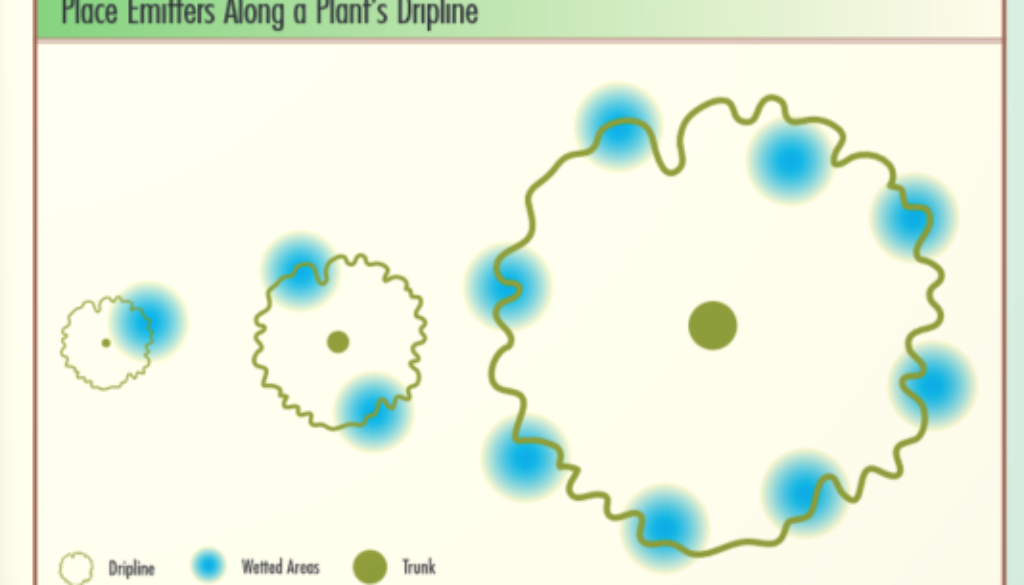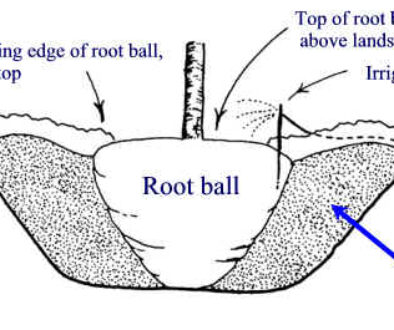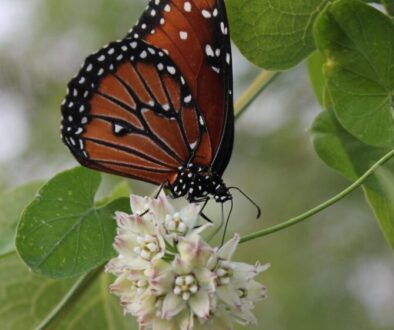How Far Should a Drip Be from a Tree Trunk?
It may not seem like a big deal, but the space between a tree’s trunk and its water source can be a lifesaver or a killer in Arizona landscaping. Our soil texture, the nature of root development, and species of tree affect where to place drip lines most optimally for your trees. This applies to bushes and flowers to a lesser extent as well, but the effects of watering too close to the main root flare of a plant are only truly life-altering to plants as they grow larger.
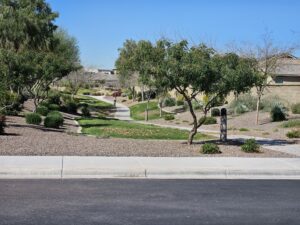
The first thing to know is that our SOIL in the Phoenix area is high in clay and is very alkaline, meaning it contains salts and has a pH higher than 7 – often over 8 in some areas of the Valley. This means that air and water flow is often poor, and it takes much longer for water to creep downwards below the topsoil. This is why professionals recommend infrequent but deep waterings to fully satiate plants in the desert. This also means that if you water a tree with a drip that is placed directly next to its main trunk, that water is likely to sit in the first several inches of soil directly around the base of the trunk for hours. This is bad for two reasons. First: watering only at the base of a tree tells the tree only to grow fine roots close to the base of the tree, which can cause root girdling (tangling and constriction) and makes the tree more likely to fall during strong winds due to not being firmly rooted in the ground. Second: standing water at the base of many tree species, especially desert-adapted trees, can lead to rotting and infection of the trunk or root flare. Either way, watering too close to the trunk makes a tree more likely to fall over or die (or both).
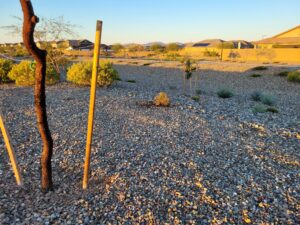
It’s also important to keep in mind the SPECIES of the tree and what its development into MATURITY looks like. Measure your tree’s canopy diameter if possible. The diameter of the canopy is a good way to estimate the diameter of the root span beneath the surface. Because of this, the general guideline is to place the drips close to the edge of the canopy in a radius around the tree. This means that as a tree grows and matures, you should change the locations of driplines. Perhaps every three years the placement of drips around a tree should be changed to match the newly expanded canopy diameter. If the tree is native to desert ecosystems, like Palo Verdes, Acacias, Eucalyptus, Mesquites, etc., then the amount of water assistance can remain consistent, if not decrease until the tree is fully self-sufficient and established. If the tree is not native to the desert, it will need more water as it grows. If you had four, 2 GPH drips circling a Ficus tree with a 10-foot diameter, but after three years its canopy is 20 feet, you should move the drips to match the edge of the canopy and increase the number of 2 GPH drips to 10. This way, the tree is well-nourished and stable without ever having its trunk swamped.
Read Water Use It Wisely’s “Landscape Watering By The Numbers” by clicking here for more specific information.
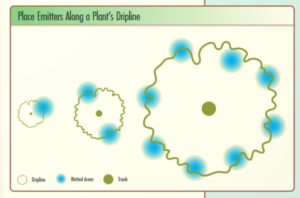
At ELS Maintenance & Construction, we install, maintain, and improve irrigation infrastructure to save water and promote healthy plant growth in communities and commercial properties around the Valley. If you know of a community or commercial center that needs new landscapers, email contactus@evergreenaz.com and we can get started!

